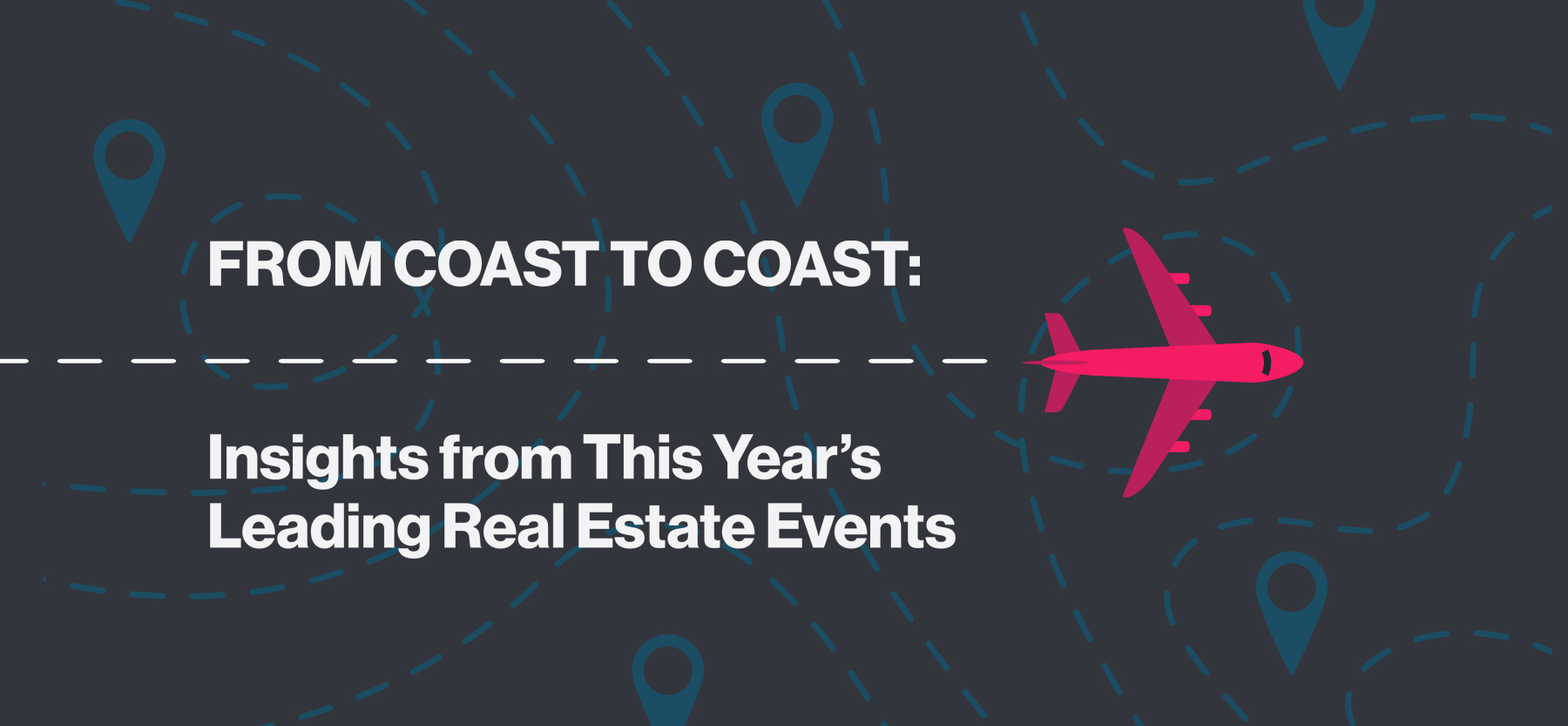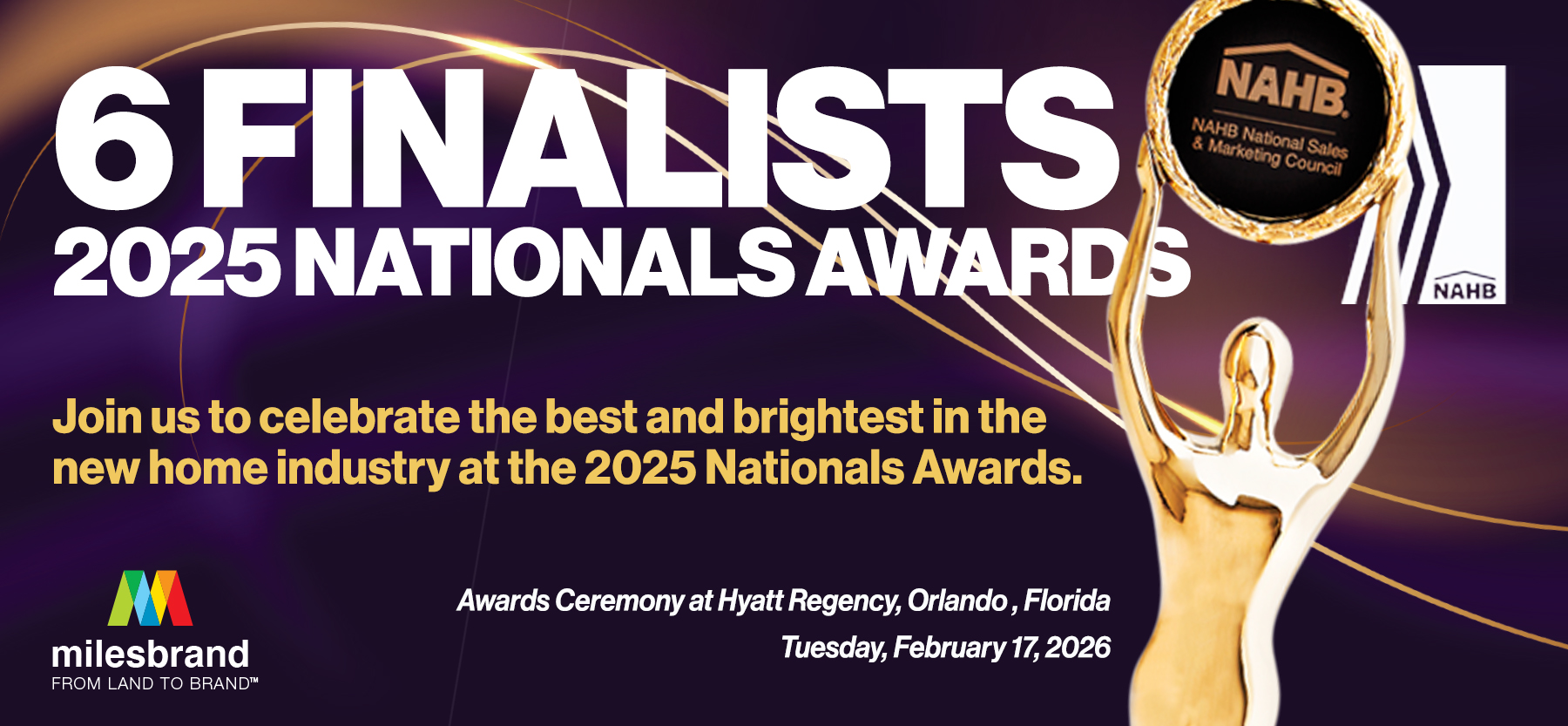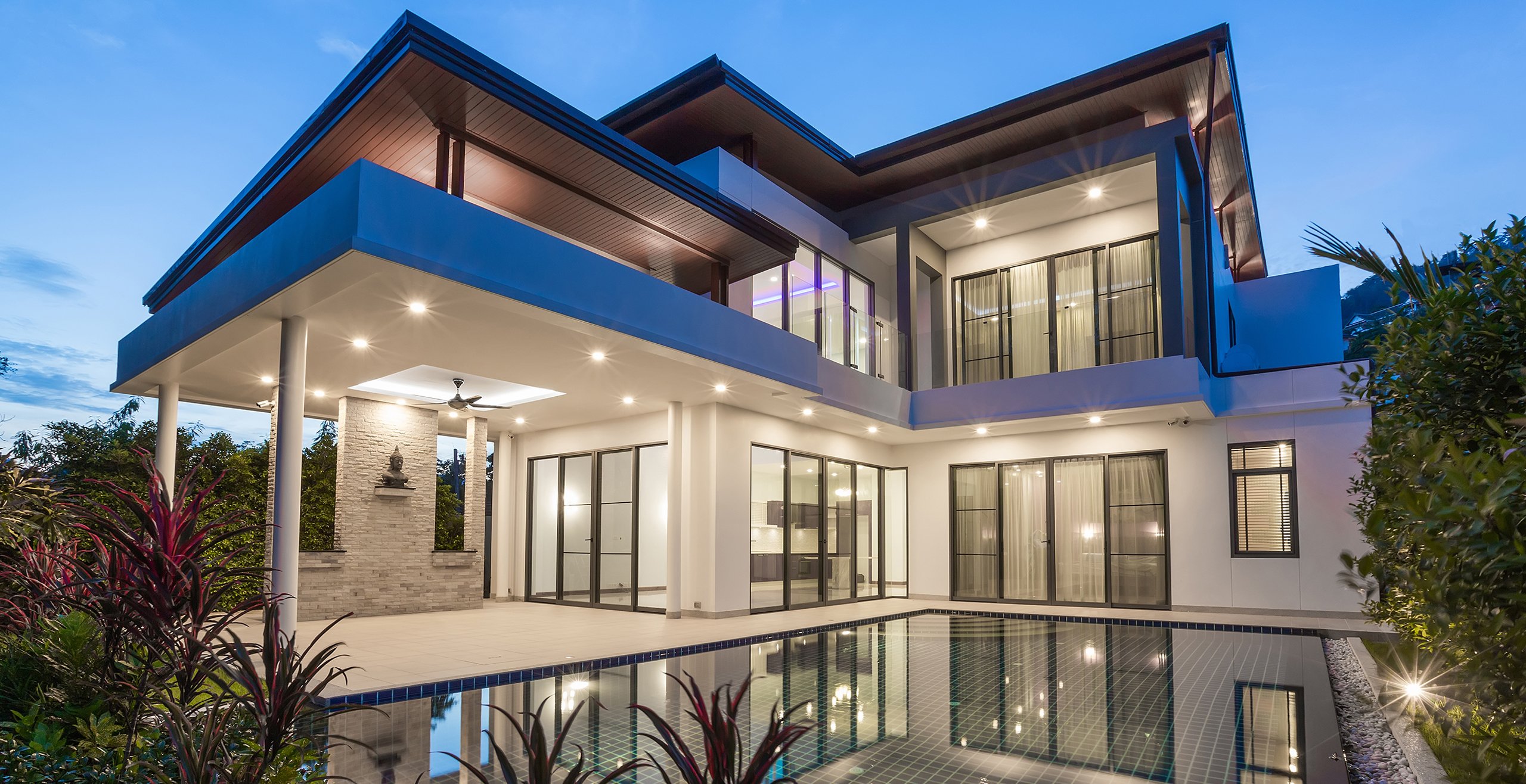July 16, 2024
How to Build a Marketing Budget for a Master-Planned Community
Creating a master-planned community marketing budget is a challenging but crucial step to strategically reaching and engaging the correct target audience. Investing in multiple marketing tactics ultimately offers home builders and real estate developers greater opportunities for higher ROI.
Once that marketing budget is created, it’s important for developers and home builders to continually monitor and evaluate the overall ROI of their marketing strategy to determine where improvements are possible or even necessary.
Take a look at our guidelines for what goes into building an effective master-planned community marketing budget:
Finding the Right Balance
When putting a marketing plan and budget in place for a new master-planned community, it’s crucial to determine how much the budget is for marketing. Experts recommend that home builder marketing budgets for master-planned communities be 1 to 1.5% of the community’s projected sales volume.
If a master-planned community offers 6,000 homes at an average sales price of $500,000, then the sales volume is projected to be $3 billion. So, for this community, the recommendation is a budget of $30 million, which is 1% of the estimated sales volume. This budget will be front-loaded to pay for initial expenses like a website, branding, signage, original photography, virtual tours and renderings, while additional budget should be saved for use toward the end of the community’s life span to help promote and sell the final home sites or available homes. Developers often find themselves struggling with the final homes that may have additional challenges, such as less-than-desirable views or locations. Allocating additional budget at the end can help push those final homes and close the community. The rest of the budget is allocated over the life of the community.
Home builders utilizing less than 1% of the predicted revenue risk underinvesting in the community and missing opportunities for reaching and creating new leads. But if the budget exceeds 1.5%, it may lead to wasted funds and significant overspending.
Budget Breakdown
Below, we’ve provided a detailed list of the elements a marketing budget should include to promote a master-planned community. These marketing tactics are necessary during different phases leading up to and after the community’s opening.
Marketing the master-planned community before construction is complete in preparation for presale events or the community’s grand opening requires prioritization of online strategies, such as social media engagement campaigns to build excitement. However, the period after the community’s opening and completion of the initial phase of homes and amenities necessitates a balance of both traditional and digital tactics for effective marketing.
Elements of a Marketing Budget
Branding
Promoting an upcoming master-planned community starts with the foundational step of establishing branding. This branding process includes creating digital and print designs to represent the master-planned community, including a logo, color palette and brand promise.
A crucial aspect of branding involves crafting the community narrative that resonates with your target demographic. This story becomes the foundation for your go-to-market strategy. Master-planned communities offer more than just new homes; they provide homebuyers with a unique lifestyle and emotional value. Community branding should effectively communicate the community’s lifestyle value and a clear vision for its residents in a memorable way that stands out to homebuyers. The brand presence should be incorporated throughout the community, from the entrance monument and placemaking elements to the sales center, home site signage and amenities, as well as all digital and physical marketing materials.
Online Presence
The home builder's website or a standalone community website is a critical element of a homebuyer’s first impression when looking into a home builder or real estate developer and their master-planned community. To maintain an exceptional online presence, real estate developers and home builders must continuously maintain and improve their website. The master-planned community marketing budget should include funds consistently allocated over the project’s life to include fresh, engaging content alongside the expected videos, renderings, interactive plans and other trendy tools. The community website is an extension of the master-planned community; it needs to grow and change along with the community, ensuring it meets homebuyers’ continued expectations.
Lead generation should be a chief priority throughout the project’s life. This can be achieved by including strong calls to action on the website, such as easily accessible forms to request information, join a VIP list or schedule a virtual tour. Landing pages tailored to specific advertising campaigns, such as a Facebook or Google PPC campaign, provide additional ways to capture leads and offer a warm welcome to potential homebuyers.
Enhancing website search engine optimization (SEO) is at the core of creating a successful online presence for a master-planned community. Allocating funds toward optimizing SEO for both organic search and local SEO ensures the website ranks well for relevant search terms, improving online visibility and generating qualified leads. Google processes 99,000 search queries every second, and 54% of web traffic comes from organic search – don’t miss out on your share of this traffic.
Advertising
Digital – Typically, the master-planned community’s digital marketing budget includes social media and Google pay-per-click ads.
Facebook’s ability to reach huge audiences and develop targeted ads makes it a powerful tool for garnering awareness and attaining qualified leads. Additionally, this type of advertising possesses tracking capabilities that enable home builders to measure and reevaluate advertising strategies to improve audience reach and engagement.
With Google Pay-Per-Click ads, real estate developers and home builders pinpoint specific keywords related to the master-planned community’s homes or location and capitalize on these searches to drive high traffic to the website. Home builders can utilize Google Ads to target homebuyers as they consume Google products or platforms, including YouTube, Google Maps, Google Play apps and more.
The ability to retarget ads to people who have visited the community website via Google PPC, Facebook and other methods provides additional touch points for prospective homebuyers.
Geotargeting, or targeting a specific audience based on their geographic location, is another ideal digital advertising tool for reaching an identified targeted audience. This allows you to target buyers coming from specific cities, zip codes or DMAs, and can be a crucial tool for master-planned communities that have a large relocation buyer population. Most digital advertising platforms allow you to use geotargeting capabilities. In addition, geotargeting can specifically be used to target people at a precise location, such as targeting an apartment complex of potential first-time buyers who may be interested in a master-planned community’s entry-level product.
Over-the-Top (OTT) advertising platforms implement ad content through dedicated streaming services like Roku, AppleTV, Amazon Fire TV, Chromecast, or an internet-connected TV are additional lead generation sources. With high targeting capabilities and measurable tracking, OTT ads reach specific target audiences and provide strategic performance insights.
Audio advertisements on traditional and digital radio also offer a valuable opportunity for home builders and developers to implement highly targeted ads and effectively garner new leads. Streaming audio is changing the marketing landscape for real estate and presents new opportunities to reach consumers.
Online publication ads on newspaper or magazine websites are a strategic marketing investment for master-planned developments that utilize these channels to reach a growing audience. Online publications offer an invaluable placement for master-planned community ads to bolster brand awareness and reach.
Print – Although print advertising lacks the targeting and tracking capabilities of digital advertising, it can be a great ay to complement your digital strategy by reaching a specific demographic who may still prefer print media. Print marketing provides a tangible opportunity to enhance brand visibility and build brand recognition while creating a more lasting emotional connection with potential buyers.
Being featured in a publication, such as a newspaper or a magazine, targets homebuyers who are more likely to engage with printed materials. To earn positive ROI, it’s important to perform preliminary research to determine which publications reach the correct audience for the master-planned community.

Direct mail in the form of a brochure, letter or postcard reaches homebuyers directly via their mailbox. Home builders target their audience by location or home type to reach the buyers most likely interested in a master-planned community. Direct mail marketing is cost-effective and an easy way to catch attention through a tactile approach.
Billboards are an impactful way to reach a broad audience of potential homebuyers who are on the go. By utilizing billboards, home builders quickly grab homebuyers’ attention with eye-catching imagery and a captivating message or slogan. By providing the opportunity to target areas that offer the best options to reach the intended audience, billboard advertisements offer home builders a strategic, cost-effective way to promote their master-planned communities.
Content Marketing
Developing an effective content strategy is necessary to plan how a home builder or developer will share online materials to capture attention and create connections with homebuyers. Providing content about the master-planned community offers homebuyers additional information and insight into the homes, amenities and lifestyle. This content can be shared via the home builder’s website, social media channels, email or printed materials.
Publishing monthly blogs on home builder websites differentiates the brand and offers. Implementing monthly blogs allows home builders to improve SEO on their website, which helps enhance search engine rankings and drives higher traffic. The more blogs are published, the more often the website is crawled by search engines, thus providing additional ranking opportunities and becoming more visible to the target audience searching for new homes.
Social media is a staple in the online tool belt for modern home builders and real estate developers to reach and naturally engage their target audience. Home builders share interesting, relevant posts through social media and increase connections with homebuyers and other potential leads. By expanding a master-planned community’s presence using social media channels, home builders offer greater insight into the community’s homes and lifestyle opportunities.
Although real estate developers and home builders often overlook the value of public relations, investing in a solid public relations strategy rooted in media relations enables home builders and communities to manage their brand image, boost brand awareness and garner new leads. By expanding the master-planned community’s online presence within media that reaches the target audience, home builders enhance brand recognition and increase the likelihood that targeted homebuyers will be interested to learn more and visit the community.
Email marketing is important for home builders promoting master-planned communities because it provides a straightforward way to encourage prospects to join the community’s VIP list, announce the start of sales or offer other relevant updates about the community. This is an effective way to strengthen connections and provide personalized marketing that turns leads into buyers. For home builders considering the value of email marketing, HubSpot research indicates that emails return $38 for every $1 spent, providing a 3,800% ROI.
Visual Representation
Delivering renderings and site maps of the master-planned community, as well as professional photography and video, to be shared on the home builder website and master-planned community website and social media channels is a crucial way to effectively engage the target audience and communicate the planned design and lifestyle to homebuyers during the construction process. Allowing homebuyers to visualize the streetscape and homes is key to selling them on the vision for the development.
When providing professional imagery to represent the community, utilize original photography to communicate its lifestyle and appeal. Using stock photos significantly lessens the impression made on prospective homebuyers looking for genuine insight into what the master-planned community offers. Plan to have photography taken throughout the life of the development to showcase progress and then the finished product.

Original videos also offer an incredibly effective way to engage potential prospects interested in a master-planned community. Providing an overview of the community or an inside look into new homes through video tours that move from room to room throughout the home captures homebuyer attention. Another option is videos that include montages accompanied by lighthearted background music or voiceovers. Drone videos are another great way to showcase the full extent of a community. These tactics offer homebuyers a fun preview of the master-planned community and its beautiful home exteriors and interiors.
Home shoppers want to “tour” the master-planned community online before visiting. Because of this, 3D virtual home tours are now must-haves. Virtual tours allow homebuyers to explore homes and communities online from pretty much anywhere. These interactive experiences boost brand awareness and increase customer engagement with a builder’s online content. Not only do virtual tours save money (virtual tours cost far less than decorated models), but implementing this technology also indicates to homebuyers that the builder keeps up with modern expectations within the new home industry.
Collateral
Providing qualified leads with a variety of high-quality printable or downloadable collateral keeps them moving through the buyer’s journey. Collateral for a master-planned community includes several options:
- Floorplan Imagery/Details
- Community Brochures and Builder Story
- Quick Move-In Ready Flyers and Price Sheets
- Warranty Information
- Included Features Sheet
- Community Amenities and Site Plan
Printed collateral using high-quality designs and materials helps communicate a master-planned community's appeal and exceptional quality to homebuyers. Providing print collateral allows communities and home builders to remain top-of-mind for homebuyers as they have visual reminders and tangible representations of the master-planned community to take with them.
For example, while many consider printed materials such as brochures to be outdated, they can still be a valuable marketing tool when done exceptionally well. An excellent design, interactive elements such as QR codes linking to virtual elements like home tours, or unique printing techniques such as textured paper or special finishes can elevate the brochure experience and make a lasting impression (especially if your community is the only one still offering them).
Home builders should always have these printed available at the community sales center and during promotional events. Additionally, collateral should be available to email as a PDF.
Branded Items
Offer potential leads, Realtors and new residents branded gifts such as hats, bags, shirts, umbrellas or other items. Delivering these items as housewarming presents to new homeowners is meaningful in creating a solid connection between builders and homeowners. This enhances their experience with the master-planned community, leaves a lasting impression, and allows homebuyers and homeowners to share their positive experiences with others.
Listing Services
Utilizing online listing services is a valuable investment for home builders seeking to advertise their master-planned community and attract qualified home buyers. These dedicated platforms target users actively searching for new homes in a specific region, generating leads with a strong buying intent. Many listing services allow for targeted advertising based on user preferences, ensuring your community reaches the most relevant audience. Examples of popular home listing services include the following sources:
- New Home Source by BDX
- New Homes Directory
- Zillow
- Trulia
- New Home Guide
Signage
A master-planned community's signage acts as a silent ambassador, creating a lasting first impression for potential homeowners and visitors.
As the first physical representation of the community’s quality, the entrance monument is the crown jewel of the signage system. It should be a well-designed, inviting and memorable structure that reflects the community’s brand identity and sets the tone for the entire development, incorporating elements such as architectural features, landscaping or even water features.

Move beyond traditional signage and explore creative placemaking elements for the master-planned community. This could involve sculptures, murals or art installations that showcase the community’s character and become focal points within the development.
Also critical is a well-designed wayfinding system with clear and consistent directional signage. Offsite signage can guide visitors to the community entrance, while onsite signage helps them navigate amenities, neighborhoods and points of interest. Directional signs should be readable, consistently present and deliver helpful visual cues.

Sales Center
The sales center is the centerpiece of the marketing effort for a master-planned community. This welcoming and well-designed space should be designed to create a positive and engaging experience for prospective homebuyers and Realtors.

This space should ideally include exciting and interactive features, including visual displays, virtual tours and digital touch screens that allow visitors to explore elements of the master-planned community. Many community sales offices also feature a topo table that displays a miniature architectural model of the community’s layout to offer visitors an overall vision. Decorating the office with informational wall displays shares the story of the community and builders in a clear and visually engaging way, offering a compliment to the knowledge sales representatives onsite.
Take it one step further by creating a full sensory experience by incorporating comfortable seating areas, curated music playlists, a space for children to be entertained, coffee and snack station, or even a signature scent that offers a welcoming and memorable environment that appeals to multiple senses.
Events
Show off the value of a new master-planned community by hosting community events for prospective homebuyers and local Realtors. Community events are a valuable way to invite potential homebuyers to experience the lifestyle, beautifully designed homes, amenities and welcoming streetscape. Pre-sale and grand opening events are an easy way to directly engage with relevant prospects on the community’s VIP list. Promote events beforehand throughout the community website, social media and email newsletter.

Events also foster connection and relationships among current homeowners, ensuring they stay for years to come (and possibly bring their friends to be their neighbors, too!). Consider hosting events that are geared toward homeowners but open to the public, such as concerts, farmer’s markets or holiday celebrations.

Marketing Team
Determining who is responsible for master-planned community marketing is a significant budget consideration. Will the work be done in-house or through an agency?
Based on skillset, company vision and the amount of marketing required, the community developer should carefully assess its team’s strengths and weaknesses to determine any limitations that may prevent the implementation of a successful branding and marketing strategy. In many cases, a developer or home builder may be better served by partnering with a branding and ad agency to handle its marketing and ensure subject matter experts within the agency take on the responsibilities. If marketing efforts are handled in-house, the cost of marketing staff is still added into the marketing budget. Figure out the portion of time each employee will spend on marketing and add that amount of time to the marketing budget.
Realtor Outreach
Builder-Realtor relationships are a powerful collaboration to consider when marketing a master-planned community. Realtors play a significant role in the sales of master-planned communities, and home builders and developers should utilize their master-planned community marketing budget to supplement Realtor outreach and build stronger relationships.
Hosting Realtor events improves Realtor outreach. Host open houses, invite Realtors to meet the community's sales team or offer private tours to Realtors to provide further opportunities for interaction. Home builders form connections through these events and offer Realtors additional information they can provide to their clients. Strong home builder and Realtor connections result in Realtors bringing their high-quality clients to the master-planned community.
Another way to strengthen Realtor relationships is by offering gifts or special agent-only promotions. By doing so, a builder demonstrates appreciation for their partnership with a Realtor. This works in the home builder’s favor by reinforcing the connection after a payoff and encourages the Realtor to continue partnering with the builder to find new homes for their clients.
Other Marketing Investments to Consider
While establishing a marketing budget for a master-planned community requires consideration for the many expenses already listed here, also consider investments such as:
- Design Centers
- Online Sales Counselor Commissions
- Real Estate Agent Commissions
- Decorated Model Home Expenses
Another consideration in the budget that is crucial is an allowance for exploring new marketing tactics as they emerge. The marketing landscape is constantly evolving, with new technologies and consumer trends shaping how people discover and engage with communities. Master-planned communities, with sales lifespans often exceeding a decade, need to be adaptable to embrace these changes. By setting aside a portion of the marketing budget specifically for exploring and implementing innovative marketing tactics, communities can stay ahead of the curve, reach new audiences, and maintain a competitive edge throughout their sales cycle.
Set the Foundation for Your Master-Planned Community Marketing Strategy with Milesbrand
To create an effective budget and utilize your marketing dollars wisely, your company must implement powerful branding and marketing strategies to promote your master-planned community. We deliver an invaluable branding process to successfully market your master-planned community and introduce it to the right audiences.
At Milesbrand, we provide developers and home builders with exceptional community branding that elevates your master-planned community marketing efforts. Contact our team to learn more about our branding and advertising capabilities.











